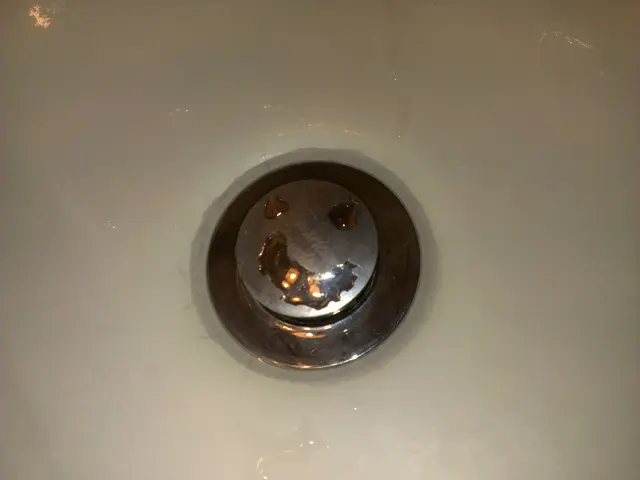Laying Down Turf Reinforcement Mesh for Weed Suppression
Installing Landscape Fabric for Easy and Effective Weed Control
For gardeners seeking a less tedious gardening experience with effective weed control, installing landscape fabric could be the solution. Here's a step-by-step guide on how to do it:
1. Prepare the site: Start by clearing the area of all existing vegetation, including roots, especially perennial weeds. Avoid putting fabric over grass without removal, as grass roots often push through fabric over time.
2. Grade and amend the soil: Level the soil and incorporate organic matter if needed before laying the fabric. Improving soil after installation is difficult without removing the fabric.
3. Cut and lay the fabric: Roll out the landscape fabric over the prepared soil. Overlap edges by at least 6 inches and run seams perpendicular to slopes to prevent erosion.
4. Secure the fabric: Use landscape staples or pins every 3-4 feet along edges and seams, adding more in windy or high-traffic areas to keep the fabric from shifting.
5. Cut planting holes cleanly: For planting, cut holes or use a controlled method like burning holes to prevent fraying and maintain neat edges, which also helps ease planting.
To ensure the longevity of the fabric and its effectiveness, consider using UV-stabilized fabrics. Also, plan adequately for water flow and drainage during soil preparation. Installing fabric before building raised beds or garden rows can simplify overall garden design.
When adding new plants to the landscaped area, make an X-shaped slit on the spot where you'd like to add the plant, dig a small hole, plant the new plant, and adjust the position of the landscape fabric around the roots of the new plants. Weeds may pop out every now and then, but they are much easier to remove at this point.
Landscaping fabric installation is recommended for gardens with a high weed population. If the landscaping fabric will be installed on a pathway or under decking, remove all plant life from the area to ensure a flat, even surface for landscaping.
Decorative gravel, crushed stones, layers of bark, etc. could also work to conceal the landscaping fabric, apart from mulch. Unroll the landscape fabric starting at the edge of the garden bed, placing the fabric on the ground lengthwise. Cut the landscaping fabric to length, adding a little extra to the trim so there is room for installing the staples later on.
Adding fertilizer to the soil during the installation process is beneficial for the plants' growth. Amending the soil with fertilizer ensures that the plants have all the nutrients they need to thrive. The soil should be smoothed with a metal rake to create a level surface free from unwanted debris like twigs, leftover plant roots, and rocks.
Tilling the soil after clearing the spot helps to aerate it and remove existing plants or unwanted debris. After setting the landscape fabric in place, add a layer of mulch, about 2 inches, and never pile the mulch against the stems of the plants. Mulch may thin out over time so continue adding more to maintain a 2 to 3-inch layer of mulch over the soil.
Following these steps makes installation less tedious by minimizing fabric movement and ensuring long-term weed suppression and durability. Installing landscape fabric can reduce the hassle of daily weeding for many gardeners.
Gardening enthusiasts who wish to enhance their home-and-garden lifestyle with easy and effective weed control might find installing landscape fabric particularly beneficial. By inserting fertilizer into the soil during the installation process, gardeners can improve their home garden's lifestyle by ensuring their plants have all the necessary nutrients for optimal growth.





